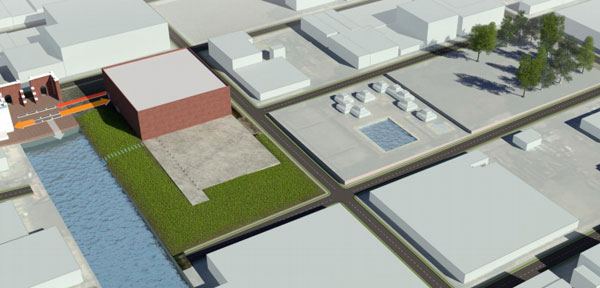Tanks for nothing!
The city is going ahead with its controversial plan to seize land along the Gowanus Canal and use it to house giant sewage tanks needed for the cleanup of the toxic waterway, rejecting an earlier plan from the Feds to dig up the Double D pool in Thomas Greene Park and stick them under there. But local environmentalists say it will have to excavate the cherished watering hole anyway — as the soil underneath is contaminated with coal tar — and buying more property will just waste money and time while the fetid body of water continues to stink up the rapidly developing area.
“The pool needs to be removed, and will be removed anyway,” said nearby resident Katia Kelly, who is a member of the Gowanus Superfund Community Advisory Group, a panel of locals that advises the federal Environmental Protection Agency on the cleanup. “Any delay in cleanup of the Gowanus is unconscionable, especially since we are opening up the Canal to development.”
The city announced the plan on Thursday, following years of debate with the federal agency, its state counterpart, and the community about where the tanks should go.
The Feds are the ones forcing the city to install the giant receptacles — which will hold raw sewage and storm water so it doesn’t flood the canal when it rains — but said it would give local officials the final say on where to put them.
Nevertheless, the body had been strongly pushing for it to select the city-owned Thomas Greene Park, where the watering hole is located, arguing the pool needs to be exhumed anyway to remove the toxic sludge underneath, and it could kill two birds with one stone.
But local swim fans rallied hard to save the pool — a cool summer respite for families in the neighboring public housing developments — from closure, and the city responded by concocting an alternative proposal to use eminent domain to buy private land on Nevins and Butler streets and put the tanks there.
City officials claim the pool would only be out of commission for four years that way, as opposed to the nine it says it would take installing the tanks — though federal environmental officials are dubious it will take anywhere near that long.
The owner of the property — which does not want to sell — has warned the process could cost taxpayers $100 million dollars and drag on for years. It proposed a third option, in which it would voluntarily surrender half its land for the tanks’ mechanical equipment for free, but the city rejected that deal.
The federal agency is giving the city four years to acquire the land, at which point it will just put the tanks under the pool. But in the meantime, it is plowing ahead with the cleanup process, regardless.
“There is known tar contamination beneath the pool that needs to be removed,” said agency spokesman Elias Rodriguez, though he was unable to say how long it will take to dig up and rebuild the pool, or when it might happen.





















